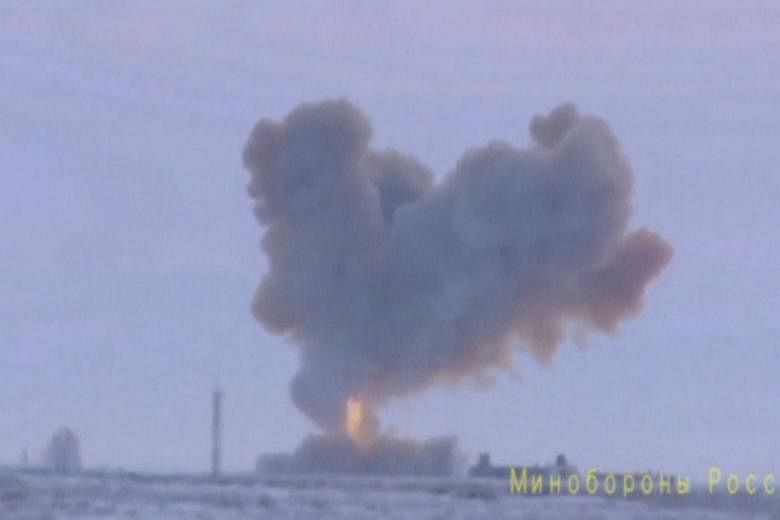TOKYO (THE YOMIURI SHIMBUN/ASIA NEWS NETWORK) - How will the United States deal with the possibility that it will lose military supremacy over China and Russia due to their development of new weapons?
To maintain its deterrence capability, the United States has embarked on a comprehensive strengthening of its missile defence system.
The administration of U.S. President Donald Trump has unveiled its Missile Defense Review (MDR) that incorporates a medium- and long-term missile defence strategy.
The previous MDR, which was compiled in 2010 under the then administration of U.S. President Barack Obama, focused on the ballistic missiles of North Korea and Iran.
With the latest MDR giving weight to ways of responding to new arms developed by China and Russia, it could be described that the U.S. is showing a sense of danger that its missile defence system might be neutralised.
Posing threats are hypersonic weapons that are capable of traveling at speeds five or more times faster than the speed of sound, making them difficult to detect and intercept.
These weapons are separated from ballistic missiles after their launch and act like gliders to reach targets.
China is said to be accelerating the development of hypersonic weapons, which China plans to have mounted on a new ballistic missile known as the (Dongfeng) DF-17.
Russia last year successfully test-launched its Avangard hypersonic missile and plans to deploy the new weapons as early as this year.
Putting pressure on the U.S., Russian President Vladimir Putin declared that missile defence systems of an adversary will have no means to deal with them.
It is essential to prevent the activities of U.S. troops in Asia and Europe from being threatened, causing regional destabilisation.
Given the difficulty of tracing new weapons by land-based radars, the 2019 MDR sets forth the utilisation of space.
It calls for building a surveillance network without blind spots through the use of sensors mounted on satellites and establishing a system capable of intercepting targets with a high degree of precision.
The United States plans to begin the operation of the planned missile defence system in the 2020s.
The United States will also promote research on shooting down targets in the initial stage after launches by utilising drones equipped with laser weapons or its state-of-the-art F-35 stealth fighter jets.
It is unavoidable that the development of a new missile defence system will require a tremendous amount of expenditures.
Can the Trump administration obtain cooperation from Congress?
Will the U.S. request its allies to increase their burdens?
These matters need to be watched closely.
A matter of concern is an unregulated arms race in space involving the United States, China and Russia.
The United States must work on ameliorating tensions and controlling arms with China and Russia, while securing its deterrence capability.
The threat of North Korea's ballistic missiles faced by Japan remains unchanged.
The MDR warns that the North has been increasing the number of missiles deployed and diversifying the ways it transports them, including the use of mobile launch pads and launches from submarines.
As long as prospects remain uncertain about North Korea's relinquishment of nuclear and missile development programs, Japan and the United States are called on to continue to work toward enhancing their missile defence capabilities.
The Yomiuri Shimbun is a member of The Straits Times media partner Asia News Network, an alliance of 23 news media organisations.

